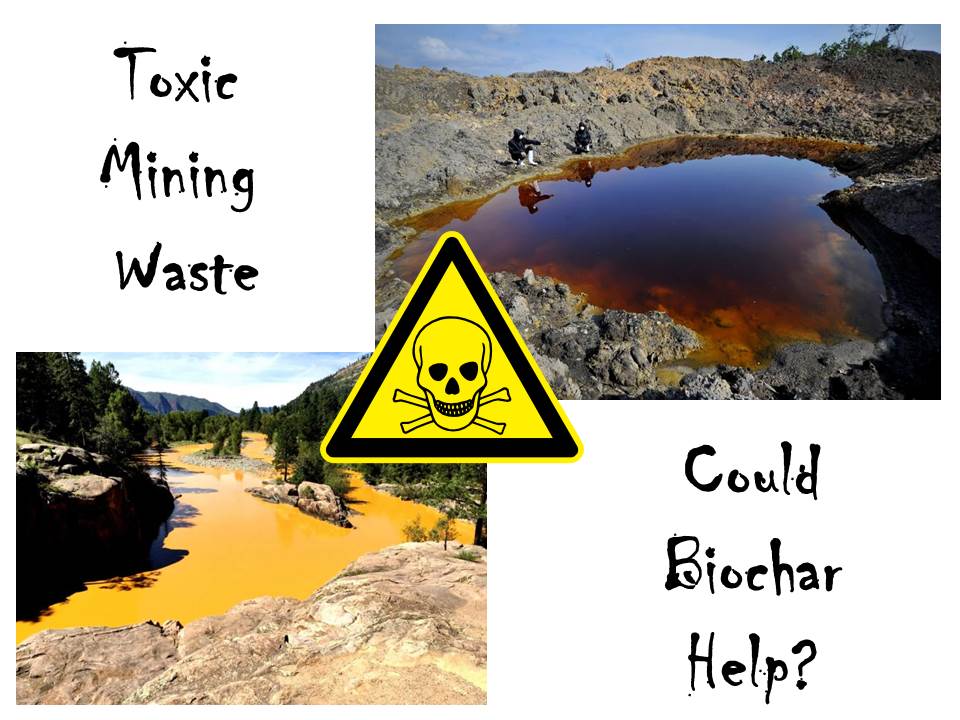Toxic Waste From Abandoned Gold Mines: A Growing Environmental Concern

Table of Contents
The Nature of Toxic Waste in Abandoned Gold Mines
Abandoned gold mines represent a significant source of environmental pollution due to the hazardous materials left behind. The legacy of irresponsible mining practices continues to impact communities and ecosystems for generations.
Heavy Metal Contamination
Gold mining operations often release a cocktail of heavy metals into the surrounding environment. These toxic substances, including arsenic, mercury, lead, and cyanide, are highly toxic, even at low concentrations.
- Arsenic: Causes skin lesions, cardiovascular disease, and various cancers.
- Mercury: Damages the nervous system, kidneys, and lungs; bioaccumulates in fish, posing a risk to human consumers.
- Lead: Affects neurological development, particularly in children, and can cause kidney damage and anemia.
- Cyanide: Highly toxic and acutely lethal; even low concentrations can harm aquatic life.
The process of bioaccumulation (the buildup of substances in an organism) and biomagnification (the increase in concentration of substances as you move up the food chain) further exacerbates the risks associated with these heavy metals.
Acid Mine Drainage (AMD)
Acid mine drainage (AMD) is a significant byproduct of many abandoned gold mines. It occurs when sulfide minerals, such as pyrite (iron sulfide), are exposed to air and water. This oxidation process generates sulfuric acid, which lowers the pH of water and releases dissolved heavy metals.
- AMD drastically reduces water pH, creating highly acidic conditions lethal to most aquatic life.
- The low pH mobilizes heavy metals from mine tailings and waste rock, further contaminating water sources.
- Sulfide oxidation is a complex chemical process influenced by factors like temperature, moisture, and the presence of microorganisms.
Other Pollutants
Beyond heavy metals and AMD, abandoned gold mines often leave behind a legacy of other pollutants:
- Tailings: The waste material left over after the extraction of gold, often containing high concentrations of heavy metals and other toxic substances.
- Waste rock: Rock material removed during mining that may contain elevated levels of harmful elements.
- Chemicals used in gold extraction: Various chemicals, such as cyanide and mercury, are often used in gold extraction and can contaminate soil and water. Improper disposal poses a significant environmental threat.
Environmental Impacts of Abandoned Gold Mines
The consequences of toxic waste from abandoned gold mines are widespread and devastating, affecting various components of the environment.
Water Pollution
Heavy metal contamination and AMD severely impact water quality in rivers, lakes, and groundwater sources.
- Contaminated water poses a serious threat to human health, particularly in communities relying on these water sources for drinking and irrigation.
- Aquatic ecosystems are particularly vulnerable; heavy metals and low pH can decimate fish populations and other aquatic life.
- The long-term effects on biodiversity can be irreversible, disrupting entire ecosystems.
Soil Contamination
Toxic waste from abandoned gold mines severely compromises soil health.
- Heavy metals accumulate in the soil, inhibiting plant growth and reducing agricultural productivity.
- Soil contamination can persist for decades, even centuries, posing a long-term threat to land use and ecosystem health.
- Soil erosion can further spread the contamination, impacting larger areas.
Air Pollution
Dust from exposed tailings piles can contain significant amounts of heavy metals, leading to air pollution.
- Inhaling dust particles containing heavy metals poses a serious health risk, particularly for individuals living near abandoned mines.
- Air pollution from abandoned gold mines can affect respiratory health and contribute to other health problems.
Remediation and Mitigation Strategies
Addressing the environmental damage caused by abandoned gold mines requires a multi-pronged approach encompassing remediation and prevention.
Passive Remediation Techniques
Passive techniques utilize natural processes to remediate contaminated sites.
- Constructed wetlands: Wetlands designed to filter contaminated water, removing heavy metals and improving water quality. These are cost-effective but can be slow-acting.
- Bioremediation: Employing microorganisms to break down or immobilize pollutants. This method is environmentally friendly but requires specific conditions to be effective.
Active Remediation Techniques
Active remediation techniques involve more intensive intervention.
- Chemical treatment: Neutralizing acidity and removing heavy metals from water using chemical agents. This is effective but can be costly and have its own environmental impacts.
- Excavation: Removing contaminated soil and waste materials. Expensive and disruptive but necessary for heavily contaminated sites.
- Capping: Covering contaminated areas with impermeable materials to prevent further contamination. A cost-effective solution but may not fully remediate the problem.
Preventing Future Contamination
Preventing future contamination from gold mines is crucial. This involves implementing stringent regulations and promoting sustainable mining practices.
- Strengthening regulations: Implementing and enforcing stricter environmental regulations for gold mining operations is vital.
- International collaboration: Global cooperation is needed to share best practices and harmonize regulations.
- Sustainable mining practices: Adopting sustainable mining techniques minimizes environmental impact throughout the mining lifecycle, from exploration to closure.
Conclusion
Toxic waste from abandoned gold mines presents a severe and persistent environmental threat, causing widespread water and soil pollution, impacting human health, and devastating ecosystems. The long-term consequences are dire, necessitating urgent action. We must prioritize remediation efforts, utilizing both passive and active techniques where appropriate. More importantly, we must focus on preventing future contamination by implementing stricter regulations, promoting sustainable mining practices, and fostering international collaboration to tackle the problem of toxic waste in gold mining. Learn more about abandoned gold mine pollution and support organizations dedicated to remediation efforts. Share this article to raise awareness and advocate for responsible mining practices. Let's work together to mitigate the devastating impacts of toxic waste from abandoned gold mines and protect our planet for future generations.

Featured Posts
-
 Nba Playoffs 2025 Full Tv Schedule For Round 1 And Bracket
May 06, 2025
Nba Playoffs 2025 Full Tv Schedule For Round 1 And Bracket
May 06, 2025 -
 Ymn Bla Dmae Drast Lndae Alhjylan Wathrh
May 06, 2025
Ymn Bla Dmae Drast Lndae Alhjylan Wathrh
May 06, 2025 -
 Is Golds Rally Over Analyzing Back To Back Weekly Declines In 2025
May 06, 2025
Is Golds Rally Over Analyzing Back To Back Weekly Declines In 2025
May 06, 2025 -
 Canadian Mortgage Trends The Low Uptake Of 10 Year Terms Explained
May 06, 2025
Canadian Mortgage Trends The Low Uptake Of 10 Year Terms Explained
May 06, 2025 -
 Met Gala 2025 Will The Kardashian Jenner Clan Make An Appearance
May 06, 2025
Met Gala 2025 Will The Kardashian Jenner Clan Make An Appearance
May 06, 2025
